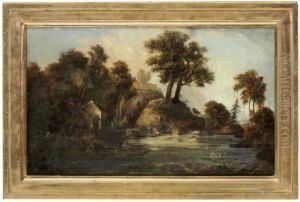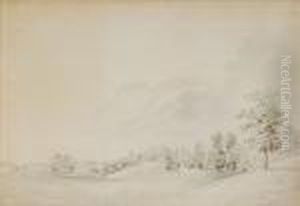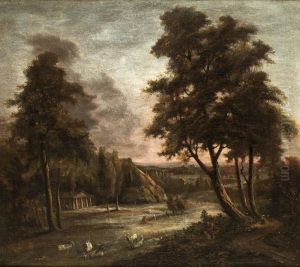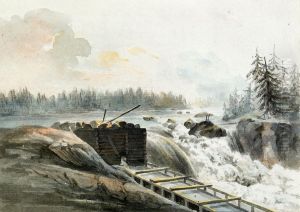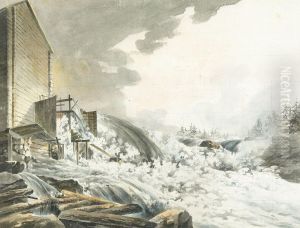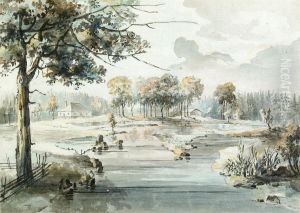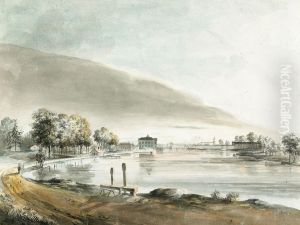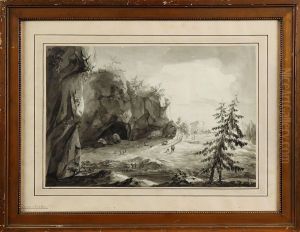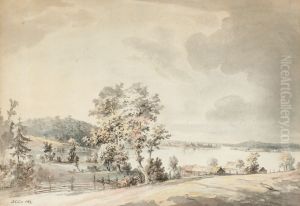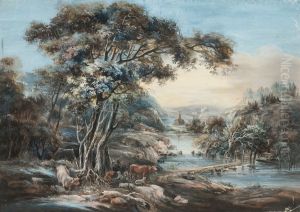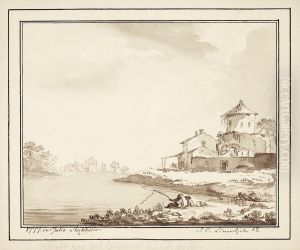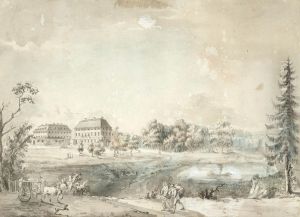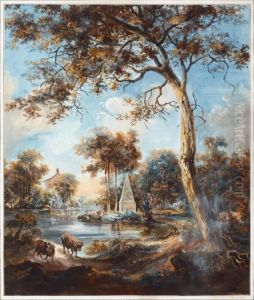Jonas Carl Linnerhjelm Paintings
Jonas Carl Linnerhjelm was a Swedish artist recognized for his contributions to landscape painting and his role in the cultural life of Sweden during the late 18th and early 19th centuries. Born in 1758, Linnerhjelm's early life set the stage for a career that would blend artistic talent with a deep appreciation for the natural world. His upbringing in Sweden, a country known for its dramatic landscapes and natural beauty, profoundly influenced his artistic direction.
From a young age, Linnerhjelm showed an exceptional talent for drawing and painting, which led him to pursue formal art studies. He studied at the Royal Swedish Academy of Arts, where he honed his skills and developed a deep understanding of artistic principles, particularly in the realm of landscape painting. His education at the academy was pivotal, providing him with the techniques and theoretical knowledge that would underpin his later work.
Linnerhjelm's career took a significant turn when he began to focus on landscape painting. He was particularly drawn to capturing the essence of the Swedish countryside, with its vast forests, rugged coastlines, and serene lakes. His works are characterized by a meticulous attention to detail, a nuanced use of color, and an ability to convey the mood and atmosphere of a scene. Linnerhjelm's landscapes are not just representations of nature; they are imbued with a sense of emotion and a deep appreciation for the beauty of the natural world.
Aside from his contributions to landscape painting, Linnerhjelm was also an active participant in the cultural and academic life of Sweden. He was engaged in the intellectual circles of his time, contributing to discussions on art, philosophy, and the role of culture in society. His involvement in these discussions reflected his belief in the importance of art as a means of understanding and interpreting the world.
Jonas Carl Linnerhjelm's legacy is marked by his profound impact on Swedish landscape painting. His works continue to be celebrated for their beauty, technical skill, and emotional depth. He passed away in 1829, leaving behind a body of work that continues to inspire and captivate audiences. Through his paintings, Linnerhjelm contributed to a greater appreciation of Sweden's natural landscapes and played a significant role in the development of Swedish art.
